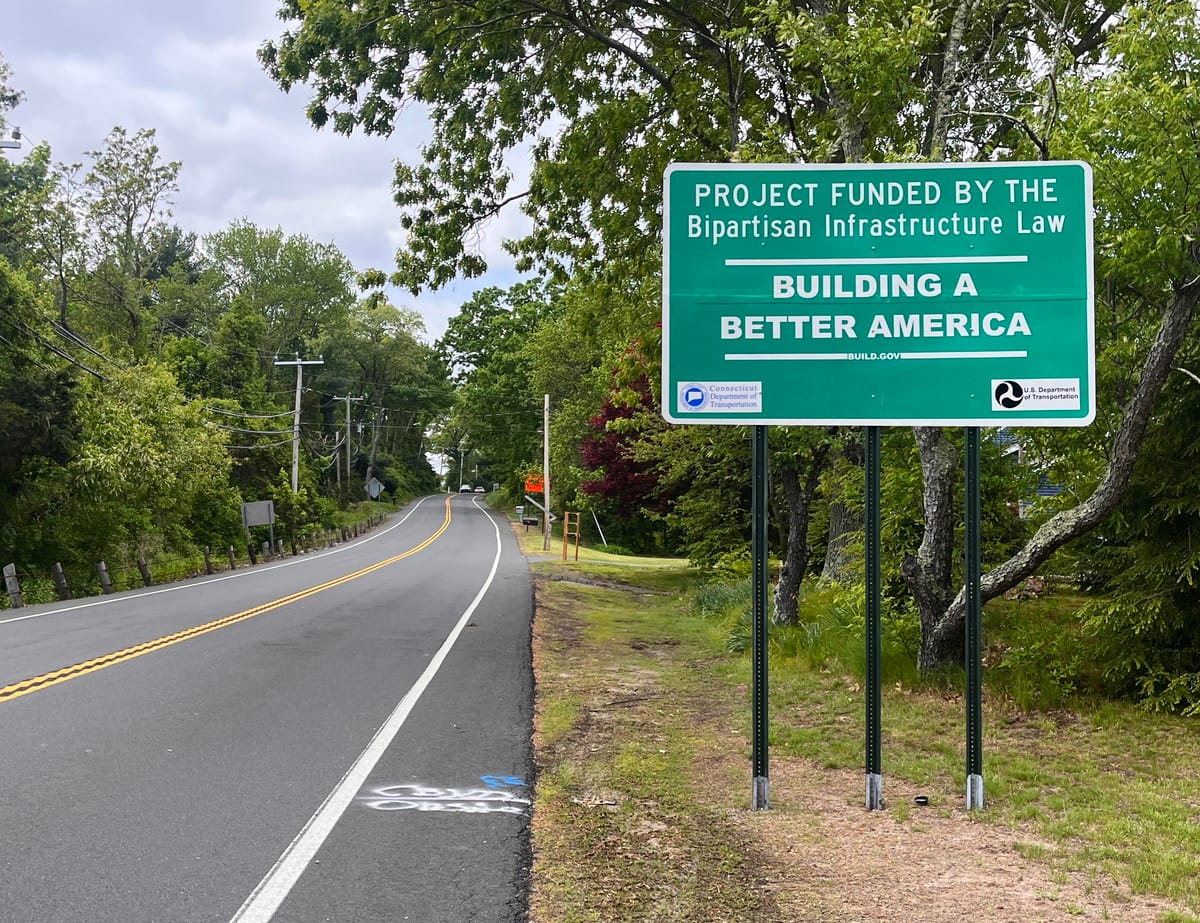Where, Exactly, Do Our Tax Dollars Go?

Years ago, on a busy city bus, I noticed a sticker the size of a Monopoly card on the corner of a glass pane behind the driver.
"Funded by the American Recovery and Reinvestment Act," the sticker said in nondescript font.
Now when most people read that, I'm sure the first thing that comes to mind is, "Why yes! The nearly $800 billion, 400-page economic stimulus bill that President Obama signed into law mere weeks after his inauguration, that was a Heimlich Maneuver to an economy choking on a massive mortgage crisis, that included hundreds of billions in tax cuts to families, improved more than 2,700 bridges and 40,000 miles of road, made drinking water Clean Water Act-compliant for 48 million Americans, and most notably, helped out a bus in Portland, Maine. My taxpayer dollars delivering the goods!"
And since nobody in their right minds thinks that (besides perhaps Jason Furman, President Obama's economic advisor), this suggests that government stickers have a long way to go.
But let us remember what Shakespeare wrote lo these many years ago: A government sticker says a thousand words.
The Bard never wrote that. Bet he wish he did, though.
A government sticker tells a fascinating story if we know how to read it. But first, let's back up.
For many of us, it can feel like we drop our taxes into some vast black hole, never to know how they're used, unless there's a horrendous new, multi-bajillion dollar weapons system purchased or some bureaucrat is accused (inaccurately) of spending $16 per muffin for a Department of Justice conference.
On the subject of muffins, these morning glory gems a friend shared with me are so phenom, I'd pay $16 for them. Maybe even $17.
If we put on our Super Deluxe X-Ray Government Tax Dollar Glasses, we'll see that our taxes are in the roads and bridges we drive, bike, walk over. There's 529 college savings plans; the National Cancer Institute (the largest funder of cancer research in the world); and likely some, if not all government money funding our broadband and the power grid that electrifies our homes.
Plus Amtrak, food and car recalls, Medicare and Medicaid, fire trucks, public schools/libraries/parks, salaries of service members and food safety inspectors and cops, tons of military artillery, funding for other countries to buy our artillery, Social Security, school meals. And plllllllllllenty of other stuff (useful 30,000 foot breakdown here). Some we might support, some we might not at all support.
Since President Biden signed the $1.2 trillion Bipartisan Infrastructure bill into law in 2021, have you been lying awake wondering how much your state got? My friend, your sleepless nights are over; click right here!
But government stickers tells a more immediate story. These are our tax dollars at work in front of our very eyes! A few recent infrastructure projects underwritten by you and me:
- Updating aging gates and jet bridges at Boston's Logan Airport.
- Making the Golden Gate Bridge more earthquake proof.
- Traffic calming measures (praise be!) on I-375 in Detroit.
- Updating rural water systems in eastern New Mexico.
- Dedicated electric bus lanes in Park City, Utah.
- Improving the mangrove habitat in Puerto Rico's San Juan Bay Estuary (mangroves are among nature's mightiest climate change combatants).
- Downtown road improvements in my own Maine's Sanford to increase affordable transportation options.
Find your state's projects right here!
And if you're thinking, "I live in Massachusetts, why should I foot the bill for water stuff in New Mexico?" let's not forget that our pals in New Mexico are helping to foot the bill for Boston's Logan Airport. It's the united part of our United States.
So next time we see a major highway project clogging the heck out of traffic and everyone in our car throws up their hands because we are now going to be later than late for the picnic, we could be the lone voice in the wilderness calling out, "Probably our taxpayer dollars at work right here, folks!"
Or, given that that will likely make folks more irritated to learn that they are paying for what's making them late, we could keep our policy smarts to ourselves and check to see if there's a government sticker or sign (safely, no rubbernecking necessary).
Then when we're next breezing down the (hopefully) improved highway, we could let folks know the driving experience is much better thanks to our April 15 government investments.
Or if the highway is not at all better and paved over precious natural resources, we could let the powers that be know we'd much prefer that money go to high-speed rail or beefing up public transit, say.
Take a moment to find out where the funding came from - federal, state or local (most big infrastructure projects will be federally funded and applied for by state or local government) - then choose a legislator in the appropriate level of government to send your friendly note to about what you'd like to see differently next time. If you really want to masterclass it, point to a government-funded project in the state you liked as a model for future projects.
Government stickers are telling all kinds of stories, all around us: what projects our country, state, town has invested in and what projects they haven't invested in - at least yet.
Now that we've got a few more tools to read these stickers, we can decide if we like the stories they're telling. And perhaps help write better stories in the years ahead.
